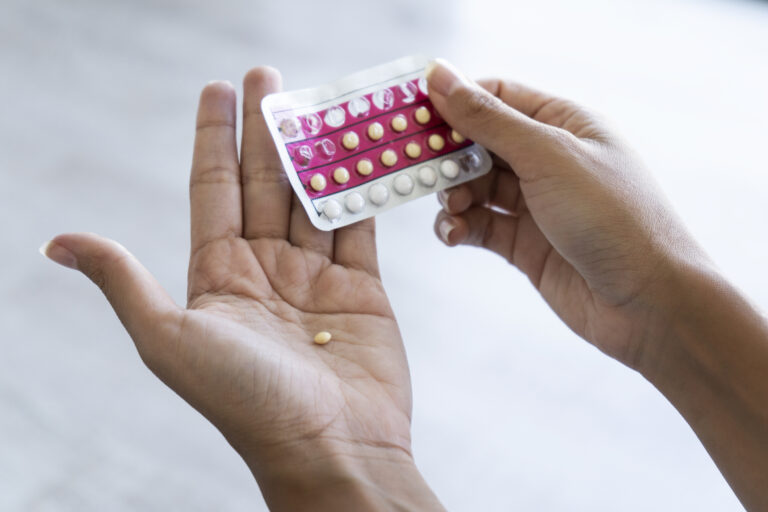On the morning of 2 October 2009, one of us (Joan) joined an audience of mostly health professionals and listened as Dr. Diane Harper, the leading international developer of the HPV vaccines, gave a sales pitch for Gardasil. Gardasil, as you may know, is the new vaccine that is supposed to confer protection against four strains of the sexually transmitted Human Papillomavirus (HPV).
Dr. Harper came to the 4th International Public Conference on Vaccination to prove to us the real benefits of Gardasil. Sadly, her own presentation left me (Joan) and others filled with doubts. By her own admission, Gardasil has the doctors surrounding me glaring at a poor promise of efficacy as a vaccine married to a high risk of life-threatening side effects.
Gardasil, Dr. Harper explained, is promoted by Merck, the pharmaceutical manufacturer, as a “safe and effective” prevention measure against cervical cancer. The theory behind the vaccine is that, as HPV may cause cervical cancer, conferring a greater immunity of some strains of HPV might reduce the incidence of this form of cancer. In pursuit of this goal, tens of millions of American girls have been vaccinated to date.
As I sat scribbling down Merck’s claims, I wondered why such mass vaccination campaigns were necessary. After all, as Dr. Harper explained, 70% of HPV infections resolve themselves without treatment in one year. After two years, this rate climbs to 90%. Of the remaining 10% of HPV infections, only half coincide with the development of cervical cancer.
Dr. Harper further undercut the case for mass vaccination campaigns in the U.S. when she pointed out that “4 out of 5 women with cervical cancer are in developing countries.” (Harper serves as a consultant to the World Health Organization (WHO) for HPV vaccination in the developing world.) Indeed, she surprised her audience by stating that the incidence of cervical cancer in the U.S. is so low that “if we get the vaccine and continue PAP screening, we will not lower the rate of cervical cancer in the US.”
If this is the case, I thought, then why vaccinate at all? From the murmurs of the doctors in the audience, it was apparent that the same thought had occurred to them.
In the U.S. the cervical cancer rate is 8 per 100,000 women.1 Moreover, it is one of the most treatable forms of cancer. The current death rate from cervical cancer is between 1.6 to 3.7 deaths per 100,000 women.2 The American Cancer Society (ACS) notes that “between 1955 and 1992, the cervical cancer death rate declined by 74%” and adds that “the death rate from cervical cancer continues to decline by nearly 4% each year.”3
At this point, I began to wriggle around in my seat, uncomfortably wondering, is the vaccine really effective? Using data from trials funded by Merck, Dr. Harper cheerfully continued to demolish the case for the vaccine that she was ostensibly there to promote. She informed us that “with the use of Gardasil, there will be no decrease in cervical cancer until at least 70% of the population is vaccinated, and in that case, the decrease will be very minimal. The highest amount of minimal decrease will appear in 60 years.”
It is hard to imagine a less compelling case for Gardasil. First of all, it is highly unlikely that 70% or more of the female population will continue to get routine Gardasil shots and boosters, along with annual PAP smears. And even if it did, according to Dr. Harper, “after 60 years, the vaccination will [only] have prevented 70% of incidences” of cervical cancer.
But rates of death from cervical cancer are already declining. Let’s do the math. If the 4% annual decline in cervical cancer death continues, in 60 years there will have been a 91.4% decline in cervical cancer death just from current cancer monitoring and treatment. Comparing this rate of decline to Gardasil’s projected “very minimal” reduction in the rate of cervical cancer of only 70 % of incidences in 60 years, it is hard to resist the conclusion that Gardasil does almost nothing for the health of American women.
Despite these dismal projections, Gardasil continues to be widely and aggressively promoted among pre-teen girls. The CDC reports that, by 1 June 2009, over 26 million doses of Gardasil have been distributed in the U.S.4 With hopes of soon tapping the adolescent male demographic, Merck, the pharmaceutical manufacturer of the vaccine, and certain Merck-funded U.S. medical organizations are targeting girls between the ages of 9 and 13.5 As CBS news reports, “Gardasil, launched in 2006 for girls and young women, quickly became one of Merck’s top-selling vaccines, thanks to aggressive marketing and attempts to get states to require girls to get the vaccine as a requirement for school attendance.”6
Just as I began, in my own mind, to question ethics of mass vaccinations of prepubescent girls, Dr. Harper dropped another bombshell. “There have been no efficacy trials in girls under 15 years,” she told us.
Merck did study a small group of girls under 16 who had been vaccinated, but did not follow them long enough to conclude sufficient presence of effective HPV antibodies.
If I wasn’t skeptical enough already, I really started scratching my head when Dr. Harper explained, “if you vaccinate a child, she won’t keep immunity in puberty and you do nothing to prevent cervical cancer.” But it turned out that she wasn’t arguing for postponing Gardasil vaccination until later puberty, as I first thought. Rather, Dr. Harper only emphasized to the doctors in the audience the need for Gardasil booster shots, because it is still unknown how long the vaccine immunity lasts. More booster shots mean more money for Merck, obviously.
I left Dr. Harper’s lecture convinced that Gardasil did little to stop cervical cancer, and determined to answer another question that she had largely ducked: Is this vaccine safe?
Here’s what my research turned up. To date, 15,037 girls have officially reported adverse side effects from Gardasil to the Vaccine Adverse Event Reporting System (VAERS). These adverse effects include Guilliane Barre, lupus, seizures, paralysis, blood clots, brain inflammation and many others. The CDC acknowledges that there have been 44 reported deaths.7
Dr. Harper, who seems to specialize in dropping bombshells, dropped another in an interview with ABC News when she admitted that “The rate of serious adverse events is greater than the incidence rate of cervical cancer.”8 This being the case, one might want to take one’s chances with cancer, especially because the side effects of the vaccine are immediate, while the possibility of developing cancer is years in the future.
In the clinical studies alone, 23 girls died after receiving either Gardasil or the Aluminum control injection. 15 of the 13,686 girls who received Gardasil died, while 8 died among the 11,004 who received the Aluminum shot. There was only one death among the group that had a saline placebo. What this means is that 1 out of every 912 who received Gardasil in the study died.9, see p. 8 The cervical cancer death rate is 1 out of every 40,000 women per year.10
The numbers of deaths and adverse effects are undoubtedly underestimates. Dr. Harper’s comments to ABC News concur with the National Vaccine Information Center’s claim that “though nearly 70 percent of all Gardasil reaction reports were filed by Merck, a whopping 89 percent of the reports Merck did file were so incomplete there was not enough information for health officials to do a proper follow-up and review.”11 On average, less than 10 percent—perhaps even less than 1 percent—of serious vaccine adverse events are ever reported, according to the American Journal of Public Health.12
Given the severity and frequency of Gardasil adverse reactions, I definitely wasn’t the only one in Dr. Harper’s audience who winced when she dismissed most Gardasil side effects as “easily just needle phobia.”
Due to the young age of the trial participants and the short duration of the studies, the effects of Gardasil on female fecundity have not been studied. I did discover, in my post-conference reading, that Polysorbate 80, an ingredient in the vaccine,13, see p. 12 has been observed in a European clinical study to cause infertility in rats.14 Is this an additional concern? Time will tell.
I do not wish to give the impression that Dr. Harper presented, even inadvertently, a consistently negative view of her own vaccine. She did tout certain “real benefits,” chief among them that “the vaccine will reduce the number of follow-up tests after abnormal PAP smears,” and thereby reduce the “relationship tension,” “stress and anxiety” of abnormal or false HPV positive results.
To me, however, this seems a rather slim promise, especially when weighed against the deaths and side effects caused by the Gardasil campaign. Should millions of girls in the United States, many as young as 9, be put at risk, so that sexually active adults can have less “relationship tension” about false positive HPV results? Is the current rate of death, sterility and serious immune dysfunction from Gardasil worth the potential that in 60 years a minimal amount of a cervical disease (that is already decreasing on its own) may perhaps be reduced?
But what I really wanted to know is why Merck is so eagerly marketing such a dangerous and ineffective vaccine? Aren’t there other ways they could make a profit? While Merck’s behavior is probably adequately explained by the profit motive, what about those in the Health and Human Services bureaucracy who apparently see Gardasil as medicine’s gift to women? What motivates them?
I (Steve) think that they see Gardasil as what one might call a “wedge” drug. For them, the success of this public vaccination campaign has less to do with stopping cervical cancer, than it does with opening the door to other vaccination campaigns for other sexually transmitted diseases, and perhaps even including pregnancy itself. For if they can overcome the objections of parents and religious organizations to vaccinating pre-pubescent—and not sexually active–girls against one form of STD, then it will make it easier for them to embark on similar programs in the future.
After all, the proponents of sexual liberation are determined not to let mere disease—or even death—stand in the way of their pleasures. They believe that there must be technological solutions to the diseases that have arisen from their relentless promotion of promiscuity. After all, the alternative is too horrible to contemplate: They might have to learn to control their appetites. And they might have to teach abstinence.






